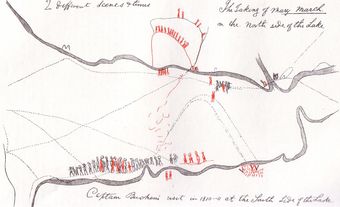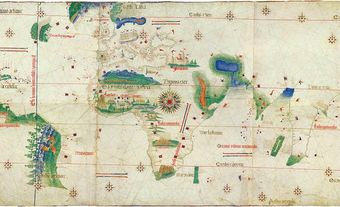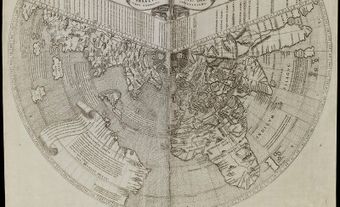The National Topographic System is a standardized method of mapping. Natural Resources Canada uses the system to produce maps that depict the country’s natural and man-made features (e.g. lakes, rivers, railways and roads). Instituted in 1927, today the NTS uses two scales: 1:50,000 and 1:250,000. In the 1:50,000 scale, 1 cm on the map represents 500 m on the ground. In the 1:250,000 scale, 1 cm on the map represents 2.5 km on the ground. Maps using the 1:50,000 scale are used for a variety of purposes, for example, recreational activities and real estate and highway planning. Because maps using the 1:250,000 scale cover a larger area in less detail, they are better suited for reconnaissance and road-tripping. (See also Cartography in Canada: 1763–Second World War.)

History
Geological Survey of Canada
Since its inception in 1842, the Geological Survey of Canada (GSC) had been hampered by the lack of good base maps on which to display the results of field investigations. In many cases, geologists had to do their own topographic mapping. This was poor use of geologists, so in 1908 a Topographical Survey Division was formed within the GSC. It was to provide topographic maps that could be used both as bases for geological maps and as general purpose topographic maps.
Creation of the National Topographic System
In 1920, the Department of the Interior joined the military and the geologists in the separate production of topographic maps. In 1922, senior officers in the three agencies began to unite their efforts into a single topographic system. After study and experimentation, by 1927 what became the National Topographic System had been developed. It was designed as a series of map scales of 1, 2, 4, 8 and 16 miles to the inch. Such a system makes topographic maps available for all requirements, ranging from military and geological use at the one-mile scale to aeronautical chart use at 8 and 16 miles to the inch.
Metric Conversion
In 1950 and 1956, the basic scales were converted to their metric equivalents of 1:50,000, 1:125,000, 1:250,000, 1:500,000 and 1:1,000,000. In 1952, a larger scale, 1:25,000, was added to the system for military and urban use. The smallest scale, 1:1,000,000, provides the basic grid that covers the whole country. This grid is quartered successively to provide the sheet boundaries of each larger scale until the largest (1:25,000) is reached. The numbering of each sheet indicates both the scale and the position of the sheet in the grid.
Present Day
Today, only two of the National Topographic System scales are left: the 1:50,000 and the 1:250,000. Over the years, the two smallest scales (1:500,000 and 1:1,000,000) became used almost exclusively as bases for aeronautical charts. But with the arrival of long-range jet planes in the 1960s, pilots found that charts based on the NTS grid were too small for handy use in the cockpit. During the 1970s, both scales were redrawn and printed on both sides of oversize paper, thus reducing the number of sheets in both series to about one-quarter of the former count.
The 1:125,000 series was dropped because it had few uses that could not be fulfilled by either the larger 1:50,000 scale or the smaller 1:250,000. The 1:25,000 scale was very expensive to keep up-to-date because it was printed in five colours and covered urban rural areas where the change in topography was very rapid. Also, many of the provinces started their own large-scale mapping programs in the 1970s, so in 1978 work was stopped on the federal 1:25,000 scale. The resources previously devoted to the dropped scales are now being used to keep the two remaining scales up-to-date.
By virtue of having their topographic mapping well in hand, Canadians enjoy the availability of a wide range of thematic maps: geological, forestry, pipeline and power transmission, tourist, etc. Many are produced by federal agencies, but the provinces, responsible for the development of their own natural resources, have become active in producing thematic maps.

 Share on Facebook
Share on Facebook Share on X
Share on X Share by Email
Share by Email Share on Google Classroom
Share on Google Classroom



